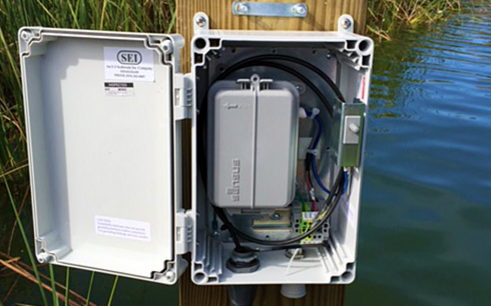Lakeland, Florida Improves Flood Prevention Capabilities with IoT
Published on by Water Network Research, Official research team of The Water Network in Technology
To monitor water levels more efficiently, the Lakeland, Florida, turned to Sensus, a Xylem brand, to help it leverage Internet of Things (IoT) technology and advanced connectivity.

For scientists at the City of Lakeland, Florida, manually monitoring lake levels to prevent flooding is a time-consuming, resource-draining task, especially during the nearly four-month rainy season.
“Maintaining balanced water levels is critical to avoid flooding in residential areas and conserve enough water for the dry season,” said Laurie Smith, manager of the City of Lakeland’s Lakes and Stormwater Division. “Our technician has to drive back and forth between 11 lakes and make sure the levels don’t get too high.”
The city’s staff knew they needed a better way to monitor water levels, and turned to Sensus, a Xylem brand, to make this goal a reality using innovative Internet-of-Things (IoT) technology. Offering unprecedented capabilities for advanced connectivity, IoT has municipalities and communities rethinking the potential for using existing and future investments in technology–such as the FlexNet®communication network–to improve the lives of the citizens they serve.
A long-time Sensus customer, the Lakeland team leveraged their investment in the FlexNet system to create remote water monitoring stations at two lakes using the Sensus® Smart Gateway sensor interface.
“Our FlexNet system had all we needed to build a remote monitoring solution, allowing us to reap tremendous cost savings from not having to implement new infrastructure,” said Smith.
With Smart Gateway and the FlexNet system, the City of Lakeland’s scientists are now able to collect water level data remotely in real time. Technicians can identify when lakes are at risk for flooding and drive directly to the affected lakes to open or close the installed flood control structures, saving time and operational costs.
“Initially, we weren’t sure if the solution was going to be accurate enough, but it exceeded our expectations,” said Smith. “We also appreciate how easy it was to use. We’re lake scientists, not technology people, and we’ve been able to quickly and seamlessly use the technology to improve our monitoring capabilities.”
With the successful pilot of the solution at two of the city’s lakes, the team now looks forward to deploying remote monitoring at the remaining nine lakes.
“The monitoring process used to take up the majority of our technician’s time during the work week, but now that time has been reduced dramatically,” said Smith. “We’re extremely pleased with the results of the pilot and are looking forward to having this system installed at all our lakes.”
Source: Sensus
Media
Taxonomy
- Technology
- Monitors
- Risk Assessment
- Data Management
- Water Monitoring
- Flood Management
- Flood management
- Flood prediction
- Internet